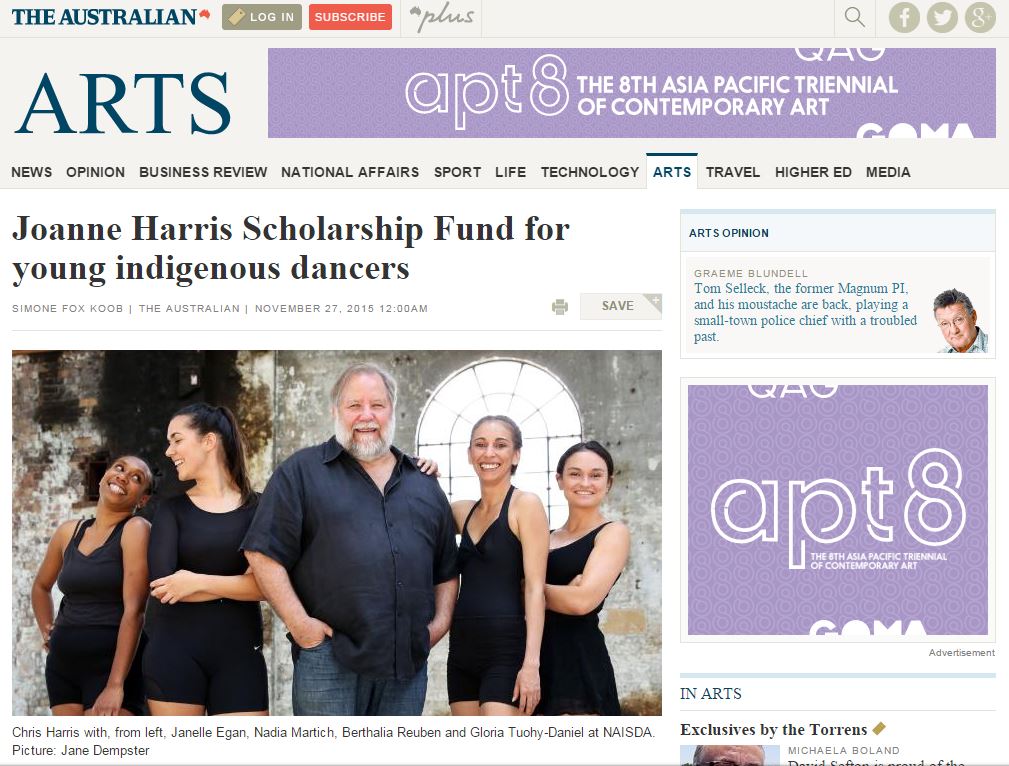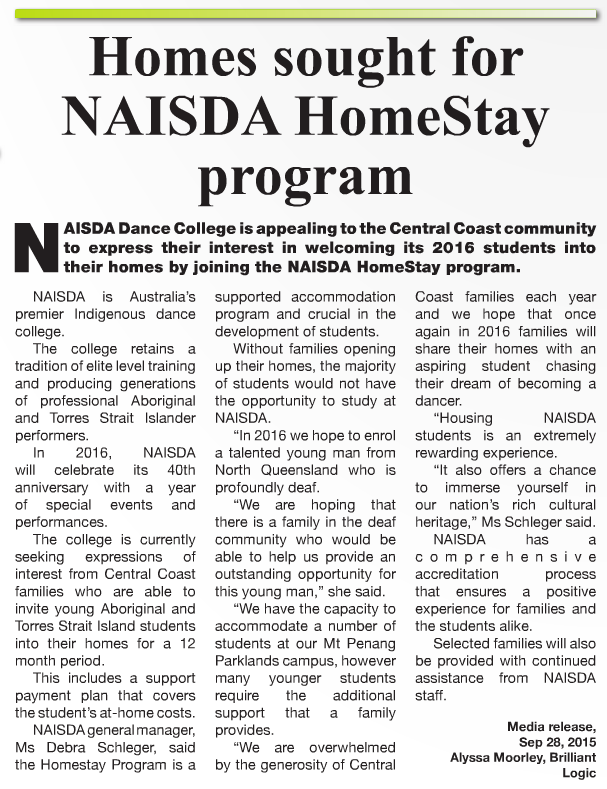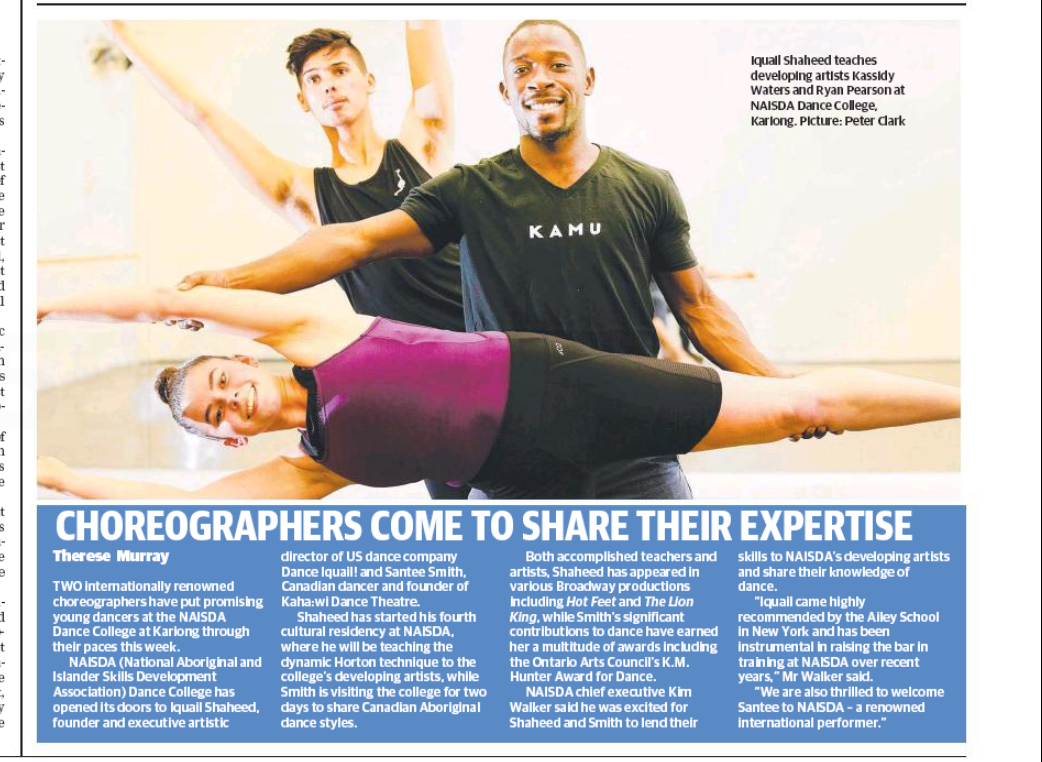As part of a Cultural Exchange and teaching arrangement and to launch NAISDA’s 40th anniversary celebrations, four NAISDA delegates recently travelled to Denver and Castle Rock Colorado, the University of Virginia, University of the Arts Philadelphia and New York to showcase Australian Indigenous Contemporary Dance and culture.
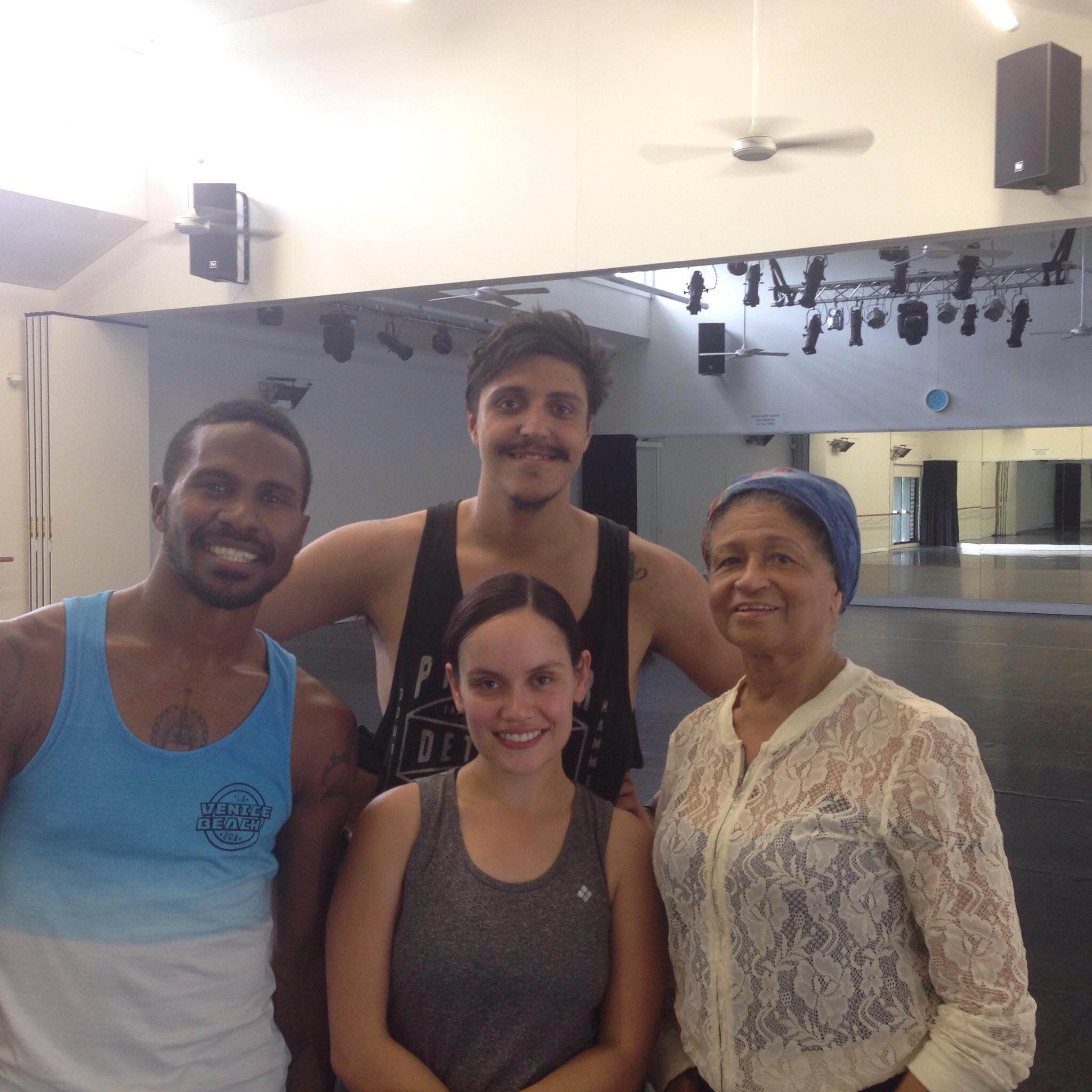
NAISDA alumni Thomas ES Kelly, Taree Sansbury and Hans Ahwang, as well as Artistic Director Emeritus and Founder of NAISDA Carole Y Johnson, were proud to share the unique style of Australian Indigenous Contemporary Dance for which NAISDA has become renowned.
We recently caught up with Taree, Thomas and Hans to find out about their experiences and what they learnt from their tour. Here’s what they had to say.
- What was the highlight of the trip for you?
Taree: Performing in the Ellie Caulkins theatre for the IABD [International Association of Blacks in Dance] Conference. The facility was top class and the exposure we received was really quite valuable. The other highlight would be having access to the University of the Arts in Philadelphia. It has the highest number of people enrolled in undergraduate dance in the whole country. The breadth of the dance course is varied and exciting.
Hans: Representing our country Australia. Performing and sharing both Indigenous Culture especially my Torres Strait Island Culture whilst teaching at the different schools and universities. Spending one week in each state which was short and sweet. Great opportunity to meet other dancers of all ages and taking the time to sit with elderly people listening to their story. Also seeing the snow for the first time coming out of the sky. New York was the biggest highlight overall.
Thomas: Teaching at the University of the Arts was a big highlight, UARTS is America’s biggest dance program. Having the opportunity to teach a class with final year students who were working at a professional level was great and then to have them enjoy and take so much away from it to be invited to teach 5 more classes was definitely a highlight for me.
- How did American artists take to Australian Indigenous Contemporary and Cultural Dance? Were there any standout teaching moments?
Hans: Lots of good feedback from individuals/audience that it was different, enjoyable, fun, challenging and that they wanted to learn more but not enough time. Most of the dancers were all natural in doing the movements. It wasn’t too complicated. They made it into their own style.
Thomas: It was always going to be a challenge in some areas and challenge them I did. There were multiple stand out moments – the public class in Charlottesville VA and the classes at University of the Arts, the students at Douglas County District High School and of course my Masterclass at IABD – all standouts with amazing moments of sweat, tears, laughter and of course DANCE!!!!
Taree: I believe the American people were excited about the challenge of learning new stylistic movement and understanding the concept of cultural influence within the dance. The dance we taught/produced is almost at polar opposites in terms of aesthetic with the typical American contemporary dance class.
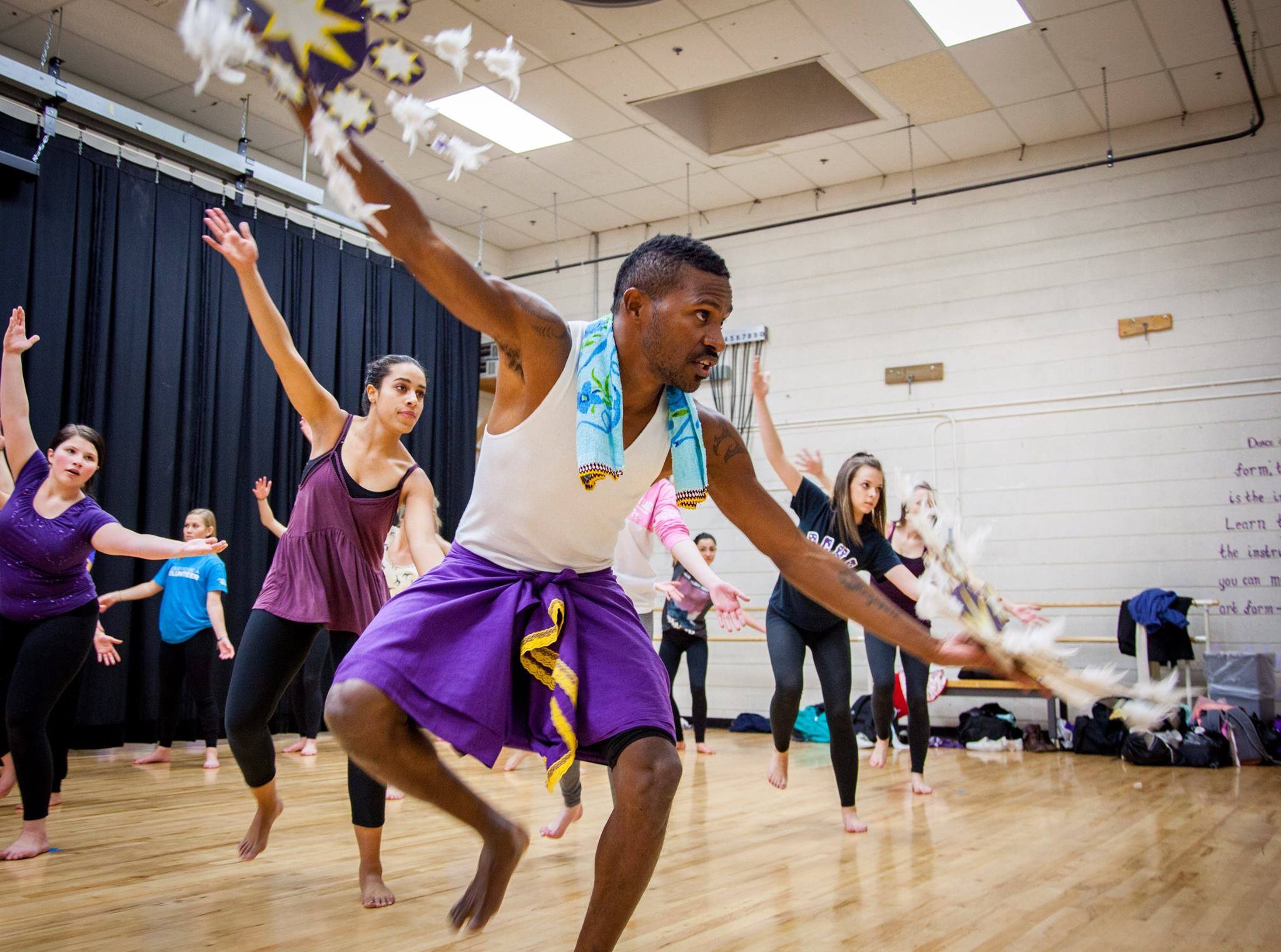
- Did you take away any new skills or knowledge from your trip?
Thomas: The constant growth of performing and teaching on an international professional and local levels are skills you can’t get inside a studio by yourself so that would be the biggest skills I’ve gained.
Taree: I think being fluid and open to change was a must on this particular trip as this set up was new and needed room to be malleable. I also was exposed to various styles of Horton teaching methodologies having only had experience with two previous teachers. It was very interesting to see that black American dance is underpinned by very strong women who have paved the way for many other artists in the industry and continue to do so. This was very inspiring and encouraging to bare witness to and be involved in.
Hans: Yes, A LOT. Also by observing their classes, technique and one on one with individuals and their tutors.
- Tell us about your experience at the International Association of Blacks in Dance Conference in Denver
Taree: It was a very comprehensive program that offers a lot of different things for many aspects of dance. It offers panel discussions, dance class, performances and official events which allow for networking. It was very multi-generational, with a focus on supporting young people into further training. As mentioned earlier the performing opportunity was among the best and opened dialogue between us and other conference goers. The attitude and enthusiasm for dance at the conference is really something to be experienced.
Hans: Best highlight to see all the different dance companies, schools and teachers/mentors coming together and performing. The African class was so fun especially all the different styles with live drumming. Afro Jazz is one of my favourite dances. Made lots of networks and connections. I would like to see more developing artists from NAISDA Dance College at this special event. Well organized.
Thomas: Being at the conference was quite amazing, it was such an inspiring place and full of empowerment throughout all the generations. Performing and teaching our own movement style in a place that was so supportive was a huge highlight for me, and that’s what the conference was about, a safe supportive uplifting environment that focuses on building up the international black dance community and not tearing each other down.
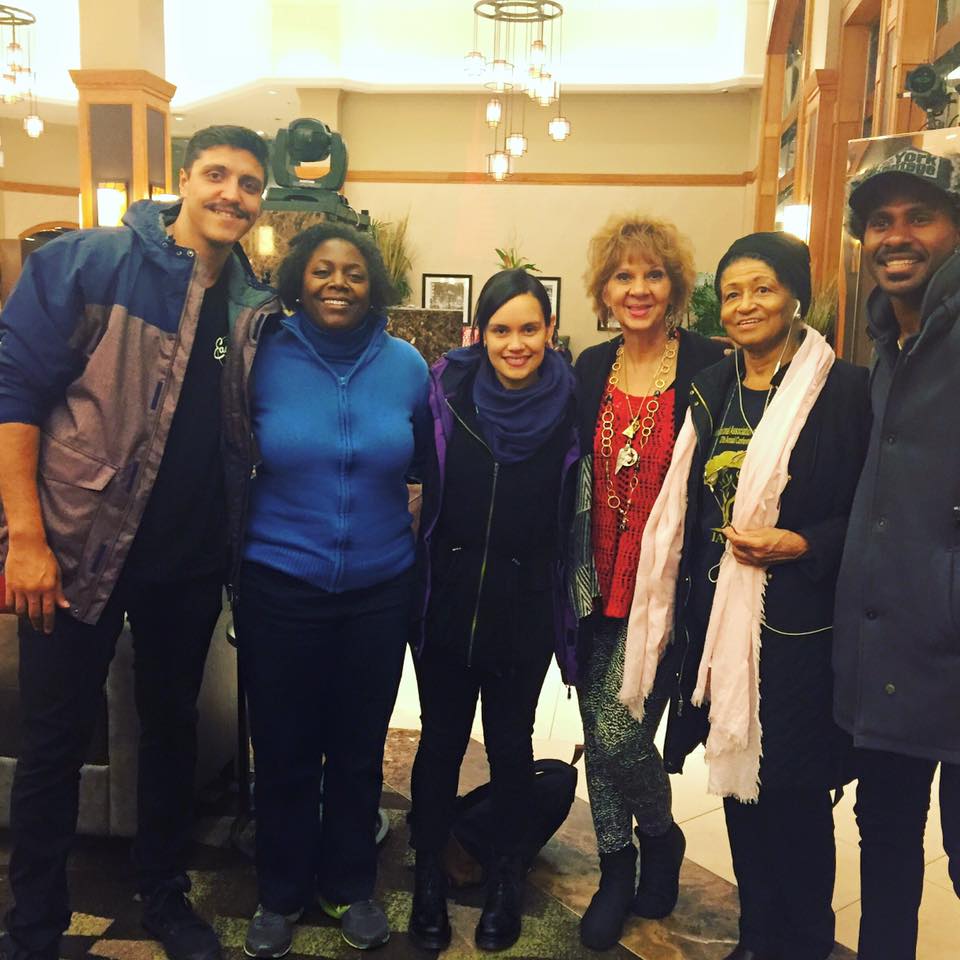
- What was your favourite city out of those you visited and why?
Hans: Colorado, Castle Rock because we had more time with the students and we were well looked after by our home stay family.
Thomas: Denver was one of the most fun cities for me, it’s a place that I probably wouldn’t have visited before this project and a bonus was that the Super Bowl Playoffs were happening and I am a Denver Broncos fan, and they eventually won the Super Bowl.
Taree: I would have to say Philadelphia for no other reason other than the University of the Arts. It had such an extensive program and very inspiring people involved it is hard to deny. It sets a high benchmark for dance training program that creates well-rounded artists.
